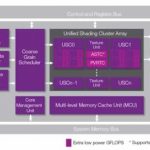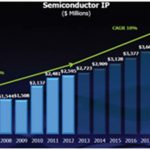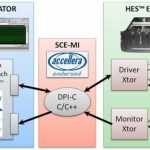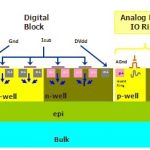Although CMOS technology in semiconductors was patented in 1960s, commercial ICs and electronic systems based on CMOS ICs started picking up in 1970s, and the real growth with personal computer (PC) market took place in 1980s. Then Intelmicroprocessors started dominating the semiconductor market with increasing processing… Read More
Electronic Design Automation
Measuring Metastability
Measuring metastability is just 50 years old this year. In 1965 my colleague Tom Chaney took a sampling ‘scope picture of an ECL flip-flop going metastable. S. Lubkin had made mention of the phenomenon over a decade before that, but at that time most engineers were unaware of the phenomenon or did not believe it actually existed. … Read More
How Imagination tested the PowerVR Series6XT
We have been hearing for some time about the Synopsys HAPS-70 and how they have co-created the hardware and software architecture for FPGA-based prototyping with their customers. Now, we see details published by Synopsys on how they collaborated with Imagination on the design of the PowerVR Series6XT GPU.
The first thing to come… Read More
Tracing Insight into Advanced Multicore Systems
After knowing about the challenges involved in validating multicore systems and domains of system and application level tracing as explained by Don Dingee in his article “Tracing methods to multicore gladness” which is based on the first part of Mentor Embedded multicore whitepaper series, it’s time to take a deeper insight … Read More
Managing Semiconductor IP
SemiWiki blogger Eric Esteve does an excellent job writing about all of the semiconductor IP available, and the popularity of IP is only growing more each year. Here’s a projection from IBS about semiconductor IP showing revenues of $4.7B by 2020:
Analyst Gary Smith divides IP into three broad categories: Functional, Foundation… Read More
Analyzing Power Nets
One of the big challenges in a modern SoC is doing an accurate analysis of the power nets. Different layers of metal have very different resistance characteristics (since they vary so much in width and height). Even vias can cause problems due to high resistance. Typically power is distributed globally on high-level metal layers,… Read More
Not All RTL Synthesis Approaches are the Same
My first experience with logic synthesis was at Silicon Compilers in the late 1980s using a tool called Genesil. Process technology since that time has moved from 3 um down to 20 nm, so there are new challenges for RTL synthesis. Today you can find logic synthesis tools being offered by the big three in EDA: Synopsys, Cadence, Mentor… Read More
Methodics Access Controls
My PhD thesis is titled The Design of a Network Filing System. Yes, that was a research topic back then (and yes, we did call them filing systems not file-systems). One big chapter was on access controls. There are several problems with designing an access control system:
- it needs to be possible to implement it efficiently
- it needs
Aldec increasing the return on simulation
Debate rages about which approach is better for SoC design: simulation, or emulation. Simulation proponents point to software saving the need for expensive hardware platforms. Emulation supporters stake their claims on accuracy and the incorporation of real-time I/O. A few years back, some creative types coined the term SEmulation,… Read More
Analyze Substrate Noise in SoC Design?
Often substrate noise analysis takes place when everything is there on the chip, but that stage comes near the tape-out which is too late to make major changes in architecture, placement, introducing noise protection circuitry for the victims and so on. It was okay when there used to be very little analog content on the chip. But … Read More








AI RTL Generation versus AI RTL Verification